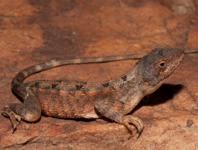Abstract
The type material of oribatid mites (Acari, Oribatida) of Tseng’s collections were lost, therefore, designation of neotypes is necessary to ensure stability in zoological nomenclature. The neotype and paraneotypes of Oribatula nativa Tseng, 1984 (Oribatida, Oribatulidae) are designated. This species is redescribed based on adult material collected from Taiwan.
References
Ermilov, S.G. & Liao, J.-R. (2017) Neotype designations and supplementary descriptions of Taiwanoppia subtropica Tseng, 1982 and Muliercula chiayiensis Tseng, 1984 (Acari: Oribatida: Oppiidae, Scheloribatidae). Systematic and Applied Acarology, 22 (7), 897–914.
https://doi.org/10.11158/saa.22.7.1International Commission on Zoological Nomenclature (1999) International code of zoological nomenclature, fourth edition. International Trust for Zoological Nomenclature, London, 306 pp.
Norton, R.A. (1977) A review of F. Grandjean's system of leg chaetotaxy in the Oribatei (Acari) and its application to the family Damaeidae. In: Dindal, D.L. (Eds.), Biology of Oribatid Mites. SUNY College of Environmental Science and Forestry, Syracuse, pp. 33–61.
Norton, R.A. & Behan-Pelletier, V.M. (2009) Chapter 15. Suborder Oribatida. In: Krantz, G.W. & Walter, D.E. (Eds.), A Manual of Acarology. Texas Tech University Press, Lubbock, pp. 430–564.
Tseng, Y. (1982) Taxonomical study of oribatid mites from Taiwan (Acarina: Astigmata) (I). Chinese Journal of Entomology, 2 (1), 53–106.
Tseng, Y. (1984) Taxonomical study of oribatid mites from Taiwan (Acarina: Astigmata) (II). Chinese Journal of Entomology, 4, 27–74.
Travé, J. & Vachon, M. (1975) François Grandjean. 1882–1975 (Notice biographique et bibliographique). Acarologia, 17 (1), 1–19.

